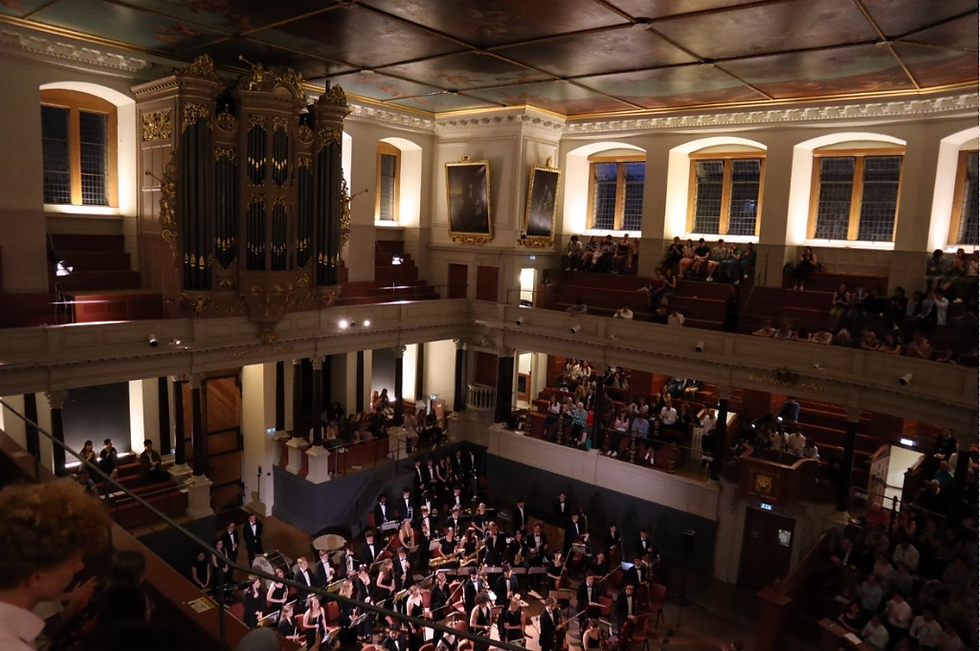CONTROL & BALANCE: OUSINF HT23
- Sami Jalil

- Feb 27, 2023
- 2 min read
It is not everyday that one is able to watch music brought to life, and it is certainly not often that one sees it done as beautifully as on 24th February by the Oxford University Sinfonietta. The glorious venue of the University Church set the stage for a refreshingly youthful and refined orchestra, fully prepared and eager to perform a programme of Haydn, Clyne and Schubert. The unity of this ensemble was evident in their every move, from the big and bold tutti sections to the subtle control of synchronized bows and fingers. Leading this brilliant ensemble from the podium was Alice Knight - a fantastic student conductor.
The programme itself was clearly well thought out, with the first half featuring Haydn’s Symphony No.60 ‘Il Distratto’ and Anna Clyne’s Sound and Fury (which is based on the former). Hearing these two pieces in succession was an entertaining experience. Haydn’s symphony began enthusiastically with a gesture and smile from Knight that indicated the energy and enthusiasm to come. The entire piece could be seen through the tip of Knight’s baton as she moved it through the air with admirable control. The contrast between sections was handled particularly well, paying homage to Haydn’s playful nature. The audible intake of breath before a sudden forte had hearts racing with anticipation, and when the piece drew to its close, the eruption of applause was definitely deserved.
Next came Clyne’s Sound and Fury, opening the door to a different sound world. Clyne’s style of composition was portrayed excellently in this performance, and the ensemble used their collective power to play in a way that shook the room. The piece was made much more accessible by the preceding performance of the Haydn, giving a sense of familiarity that enhanced the experience. The exclusion of the Macbeth soliloquy (intended to be spoken over a section of the music) left something to be desired, but this was made up for in part by the flawless execution of the music itself. To some extent, hearing the music alone was an interesting interpretation that honoured Clyne’s compositional ability.
After a short interval, the Sinfonietta assembled to present their last piece of the night – Schubert’s Symphony No.9 ‘The Great’. Certain textures of this symphony were performed beautifully, such as the folk-like oboe solo (played by Angie Ho) of the second movement that rang out through the venue, honoured by the tender accompaniment in the strings. A few moments felt underpowered and lacking in dynamic contrast, perhaps because of the smaller size of the ensemble compared to a symphony orchestra. However, this did not detract from the skilful interpretation of the work, and the prowess of these musicians was still evident.
Placing Schubert at the end of the programme rounded off the concert well, providing an overall trajectory that covered a satisfying range of eras, styles and characters whilst highlighting lesser known works, worthy of more recognition. As the venue slowly emptied into the night, Schubert’s final symphony was still ringing in the audience’s ears, and the lasting impression of OUSinf is sure to have people coming back for more.




Comments